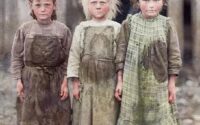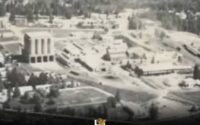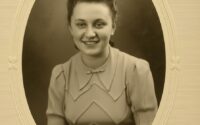THE YELLOWING HORROR: THE FIRST PHOTO OF THE AMERICAN CIVIL WAR SEPARATES HISTORY AND HELL .m
Savage Station, Virginia, June 28, 1862.
If history speaks in pictures, this is the language of pain. This anonymous but iconic photograph, called “the first great documentary photograph” of the American Civil War by expert Bob Zeller, captures the stark reality of war just one day after the bloody Battle of Gaines’ Mill.
It’s more than a moment of silence; it’s a window into the Field Hospital in the heart of the war, where the line between life and death was thinner than ever.
Chilling Details: Survival Amid the Rubble
Unlike later staged photos, this one feels shockingly real. It shows the wounded Union soldiers lying around, exhausted, and fortunate to have some hay under their backs – a luxury in the med-hog world of 1862.
Look at the background. Haversacks hanging from fences, abandoned muskets, and tattered tents. This is the most graphic image of the aftermath of war, with no glory, only physical and mental devastation. The photo forces the viewer to confront the truth: what does war mean to ordinary soldiers?
Military Mystery: Who Are the “Straw Hat Unit”?
Besides its medical and logistical documentary value, the photo also contains a fascinating military mystery: the appearance of soldiers wearing straw hats.
In the Civil War, dress was often strictly regulated, but straw hats were a sign of improvisation or adaptation to the hot Virginia climate. Identifying this “straw hat unit” could help historians better identify the units that fought at Gaines’ Mill and retreated to Savage Station. Were they infantry, cavalry, or just desperate soldiers looking for comfort?
The Documentary Difference
Why is this considered “great”?
While many later Civil War photographs focus on leadership or vast landscapes, this one focuses on people and emotion. It captures soldiers and medical personnel doing their jobs in a natural and moving way. It is a testament to human resilience in the face of tragedy, and a silent reminder of the value of every life.
It does not depict a battle; it depicts the cost of battle.
🤔 JOIN THE DISCUSSION:
What do you think about the sacrifices of these warriors and the courage of the medical staff at Savage Station Field Hospital?


